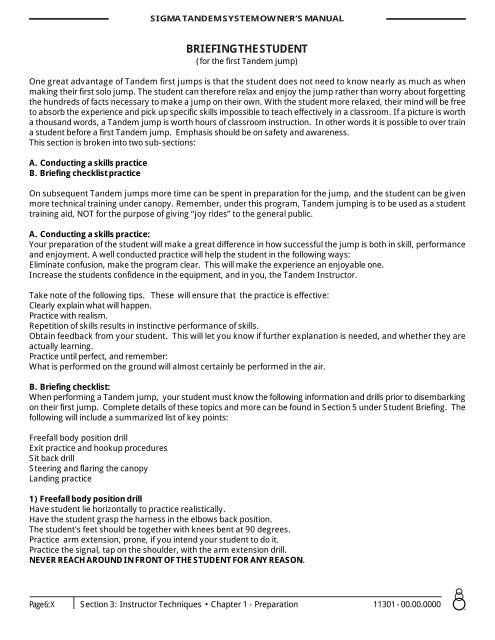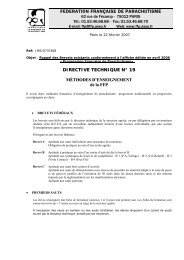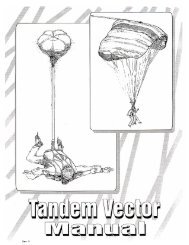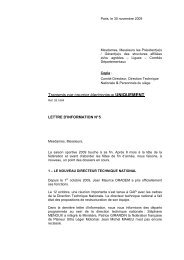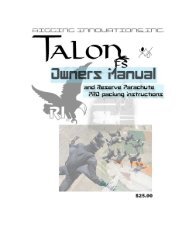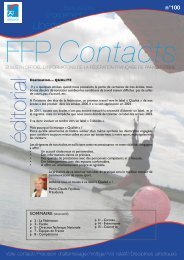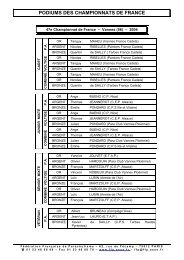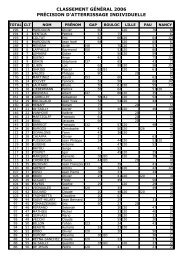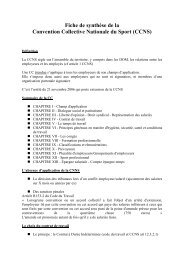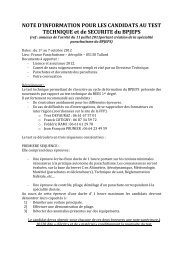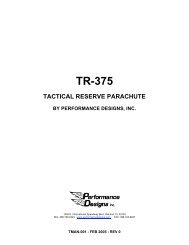tandem vector owner's manual
tandem vector owner's manual
tandem vector owner's manual
Create successful ePaper yourself
Turn your PDF publications into a flip-book with our unique Google optimized e-Paper software.
SIGMA TANDEM SYSTEM OWNER’S MANUAL<br />
BRIEFING THE STUDENT<br />
(for the first Tandem jump)<br />
One great advantage of Tandem first jumps is that the student does not need to know nearly as much as when<br />
making their first solo jump. The student can therefore relax and enjoy the jump rather than worry about forgetting<br />
the hundreds of facts necessary to make a jump on their own. With the student more relaxed, their mind will be free<br />
to absorb the experience and pick up specific skills impossible to teach effectively in a classroom. If a picture is worth<br />
a thousand words, a Tandem jump is worth hours of classroom instruction. In other words it is possible to over train<br />
a student before a first Tandem jump. Emphasis should be on safety and awareness.<br />
This section is broken into two sub-sections:<br />
A. Conducting a skills practice<br />
B. Briefing checklist practice<br />
On subsequent Tandem jumps more time can be spent in preparation for the jump, and the student can be given<br />
more technical training under canopy. Remember, under this program, Tandem jumping is to be used as a student<br />
training aid, NOT for the purpose of giving “joy rides” to the general public.<br />
A. Conducting a skills practice:<br />
Your preparation of the student will make a great difference in how successful the jump is both in skill, performance<br />
and enjoyment. A well conducted practice will help the student in the following ways:<br />
Eliminate confusion, make the program clear. This will make the experience an enjoyable one.<br />
Increase the students confidence in the equipment, and in you, the Tandem Instructor.<br />
Take note of the following tips. These will ensure that the practice is effective:<br />
Clearly explain what will happen.<br />
Practice with realism.<br />
Repetition of skills results in instinctive performance of skills.<br />
Obtain feedback from your student. This will let you know if further explanation is needed, and whether they are<br />
actually learning.<br />
Practice until perfect, and remember:<br />
What is performed on the ground will almost certainly be performed in the air.<br />
B. Briefing checklist:<br />
When performing a Tandem jump, your student must know the following information and drills prior to disembarking<br />
on their first jump. Complete details of these topics and more can be found in Section 5 under Student Briefing. The<br />
following will include a summarized list of key points:<br />
Freefall body position drill<br />
Exit practice and hookup procedures<br />
Sit back drill<br />
Steering and flaring the canopy<br />
Landing practice<br />
1) Freefall body position drill<br />
Have student lie horizontally to practice realistically.<br />
Have the student grasp the harness in the elbows back position.<br />
The student's feet should be together with knees bent at 90 degrees.<br />
Practice arm extension, prone, if you intend your student to do it.<br />
Practice the signal, tap on the shoulder, with the arm extension drill.<br />
NEVER REACH AROUND IN FRONT OF THE STUDENT FOR ANY REASON.<br />
Page 6:X Section 3: Instructor Techniques • Chapter 1 - Preparation 11301 - 00.00.0000


